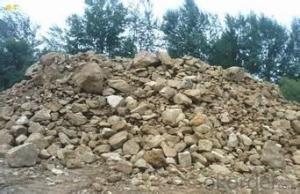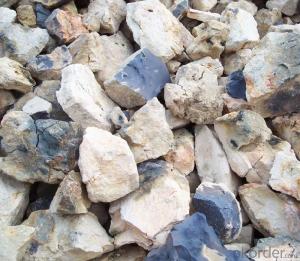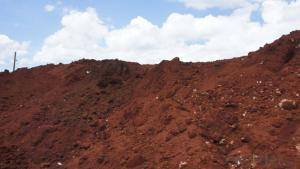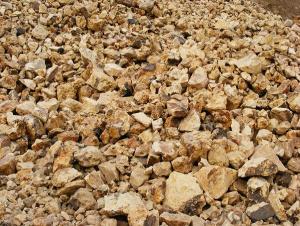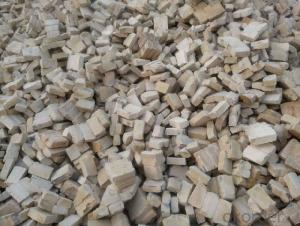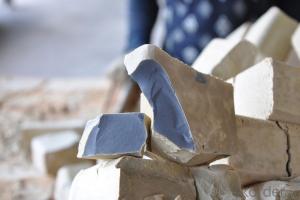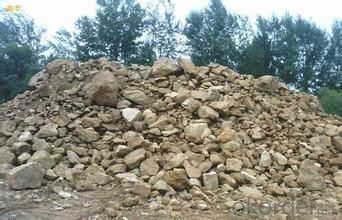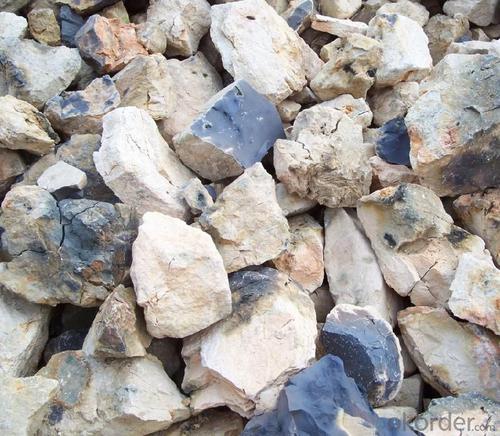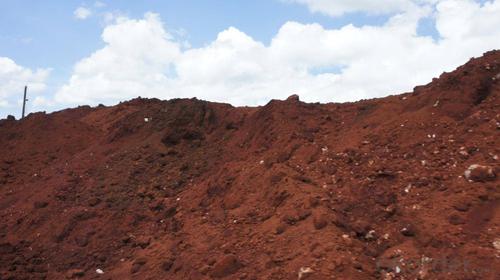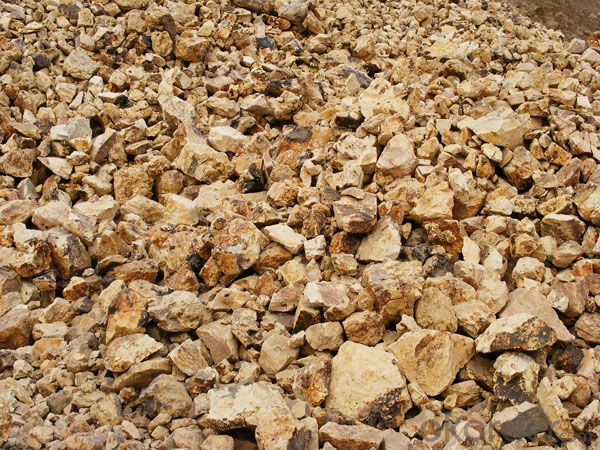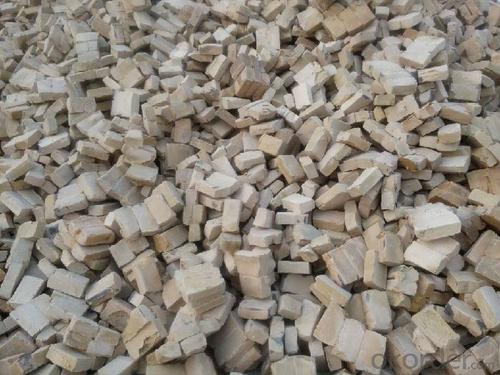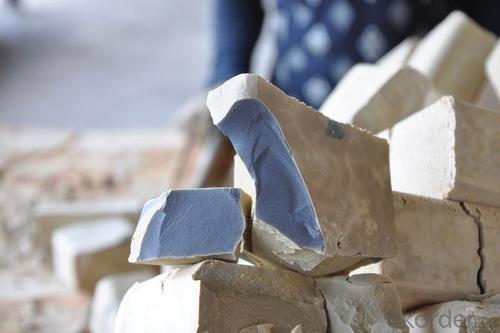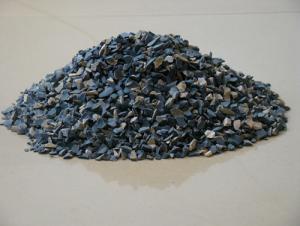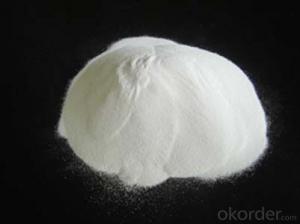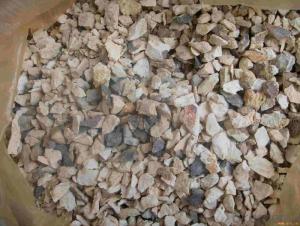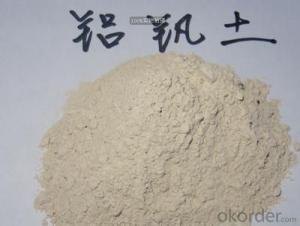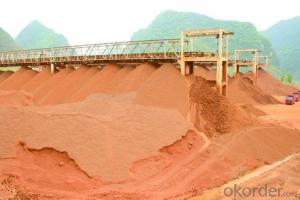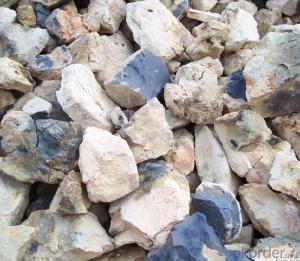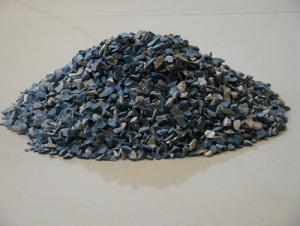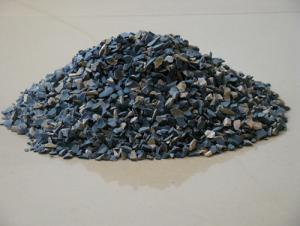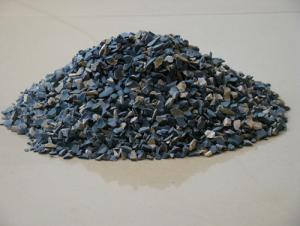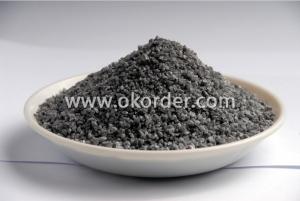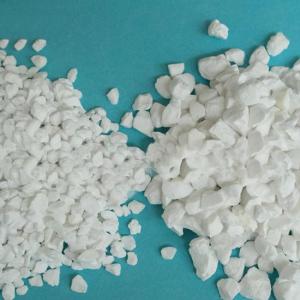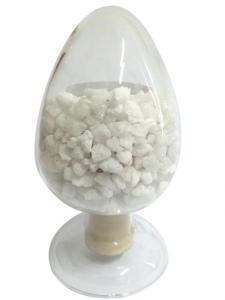Raw Materials for Refractory:High Quality Bauxite High Alumina Refractory Brick Dry Pressed Block of CNBM in China
- Loading Port:
- Tianjin
- Payment Terms:
- TT or LC
- Min Order Qty:
- 11 m.t.
- Supply Capability:
- 10000000 m.t./month
OKorder Service Pledge
OKorder Financial Service
You Might Also Like
1.Structure of Calcined Bauxite Description
Bauxite (aluminous soil; Bauxite) is also called the alumina or bauxite, main ingredients are alumina, hydrated alumina containing impurities, is an earthy mineral. White or gray, brown and yellow or light red by iron. From 4 to 3.9 g/cm3 density, hardness, 1 ~ 3 is not transparent, very brittle. Very difficult to melt. Insoluble in water, soluble in sulfuric acid, sodium hydroxide solution. Mainly used for aluminium, refractory material.
2.Main Features of the Calcined Bauxite
Calcined bauxite is one of the principal ore of aluminum. Calcined bauxite contains hydrous aluminum oxides and aluminum
hydroxides, formed through the laterization of aluminous rocks in tropical and subtropical areas .Calcined bauxite is obtained by calcining (heating)superior grade bauxite at high temperature (from 85OC to 1600C) .This removes moisture there. By increasing the alumina content,compared to an alumina content of about 57%to 58% in raw bauxite, calcined bauxite has an alumina content of 84%to88%.The heating is carried out in rotary kilns.
3.Main usage of the Calcined Bauxite
(1) aluminium industry. Used in national defense, aerospace, automotive, electronics, chemical industry, daily necessities, etc.
(2) precision casting. Alumina clinker made after the mould precision casting processed into fine powder. Used in military industry, aerospace, communications, instrumentation, machinery and medical equipment department.
(3) is used for refractory products. High bauxite clinker refractoriness is as high as 1780, chemical stability strong, and good physical properties.
4. Calcined Bauxite Images
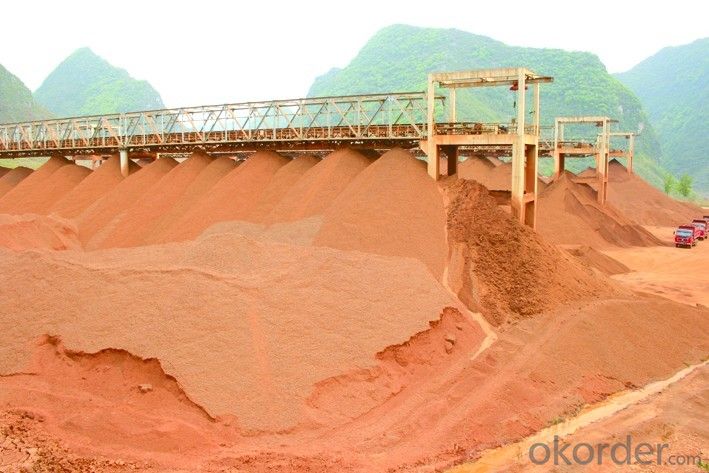
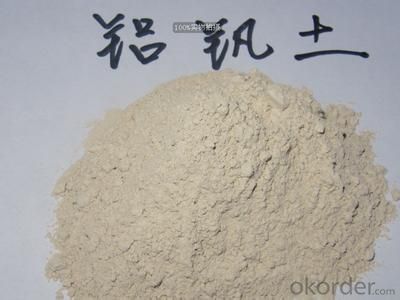
5. Calcined Bauxite Specification
BRAND INDEX | High Alumina Brick for BF | Fire Clay Brick for BF | |||
GL-65 | GL-55 | GL-48 | ZGN-42 | GN-42 | |
Al2O3, % ≥ | 65 | 55 | 48 | 42 | 42 |
Fe2O3, %, ≤ | 2.0 | 2.0 | 2.0 | 1.6 | 1.7 |
AP % ≤ | 19 | 19 | 18 | 15 | 16 |
Refractoriness °C ≥ | 1790 | 1770 | 1750 | 1750 | 1750 |
PLC % | 0~-0.2 | 0~-0.2 | 0~-0.2 | 0~-0.2 | 0~-0.3 |
1500°C x 2h | 1450°C x 2h | ||||
CCS MPa ≥ | 58.8 | 58.8 | 49 | 58.8 | 49 |
0.2MPa RUL °C ≥ | 1500 | 1480 | 1450 | 1450 | 1430 |
6.FAQ of Calcined Bauxite
1). Q: Are you a factory or trading company?
A: We are a factory.
2). Q: Where is your factory located? How can I visit there?
A: Our factory is located in ShanXi, HeNan, China. You are warmly welcomed to visit us!
3). Q: How can I get some samples?
A: Please connect me for samples
4). Q: Can the price be cheaper?
A: Of course, you will be offered a good discount for big amount.
- Q: What problems should be paid attention to while using refractory materials under a controlled atmosphere?
- Pay attention to the performance of the materials, and the use of non oxide materials!
- Q: What are the standards of refractory concrete ?
- Refractory concrete is generally divided into three categories: Light insulating concrete (for insulation); medium-quality refractory concrete (It is used for the parts where requirement of refractory temperature is not very high, and it can withstand a certain erosion of air); heavy refractory concrete (It is used for the parts where requirement of refractory temperature is fairly high, and it can withstand a certain intensity of erosion of air). It mainly depends on the design temperature and the using parts. There are a variety of raw materials, of which aluminum oxide is one of the most commonly used materials, others are alumina hollow ball, magnesium oxide, zircon, etc. It depends on the design temperature and the parts on use. Commercial concrete station generally can not produce it, instead it is compound by professional refractory concrete factories.
- Q: How to use fireclay?
- Actually, fire clay is not strong. Fireclay are all clinkers with no strength, also known as "blade mud". It is used as the filler with a thickness of not more than 3mm. Therefore, it can not be used for thermal insulation inside the furnace. Inner thermal insulation of the civil boiler can use "alumina cement", also known as refractory cement.
- Q: What is the criterion of entry of refractory clay industry?
- There are two requirements: (a) Enterprises mining and processing high-alumina clay meet the national industrial policy, and in line with the requirements of mineral resources planning and industrial planning, industrial development planning of high alumina clay in provinces (autonomous regions and municipalities), urban planning, the whole land use planning, mineral resources planning, environmental protection and pollution prevention planning. (b) The building of new mines of high alumina clay in areas where exploitation of mines are restricted in national and local level should be strictly limited. It is prohibited to build new mines in areas where exploitation of mines is banned, and the mines have been built should be disposed in accordance with the mineral resources planning and relevant national regulations. It is prohibited to build high-alumina clay production and processing enterprises in special conservation areas such as drinking water source reservation areas, natural reservation areas, scenic reservation areas, ecological function reservation areas, basic farmland reservation areas, cities and their suburbs, residence, schools and kindergartens, health center, hospitals and perimeter 1 km from enterprises having high requirements on the environment such as food, medicine, electronics etc., the both banks of main rivers and roads, somewhere near trunk railways.
- Q: Refractories for iron-making blast furnace?
- Vibrating materials, corundum brick and aluminum carbon brick will be developed. Taphole commonly use stemming, silicon carbide - graphite bricks, whose material is Al2O3-SiC-C. Medium and large sized blast furnaces in China use dense mullite bricks, castable, graphite brick. Common lining material for iron ditch is ramming mass. hearth and furnace bottom common use carbon bricks, semi-graphite bricks, charring silica bricks, corundum bricks. Blast furnace bosh and lower part of furnace stack commonly use mullite bricks.
- Q: What does refractory mean?
- Acid refractory material usually refers to refractories with SiO2 content greater than 93%. Its main characteristic is that it can resist acid slag corrosion at high temperature, but it is easy to react with alkaline slag.
- Q: What are the new types of refractories? What are the characteristics? Their applications and developments?
- Special materials often use AZS brick, corundum brick, magnesia chrome brick, silicon carbide, silicon nitride bonded silicon carbide, nitrides, silicides, sulfide, boride, carbide and other non oxide refractory materials; calcium oxide, chromium oxide, alumina, Magnesium Oxide, beryllium and other refractory materials. Often used insulation refractories are diatomite products, asbestos products, insulation panels and so on. Unshaped refractory materials commonly used are fettling, refractory ramming material, refractory castable, refractory plastic material, refractory clay, refractory gunning, refractory cast material, fireproof coating, lightweight castable, mud etc..
- Q: How many types of fire-resistant material?
- 1. Acid fire-resistant material refers to one with more than 93% SiO2. It is featured by resistance to the corrosion of acidic slag ad high temperature and easy to react with alkaline molten slag. 2. Alkaline refractory material generally refers to one with magnesium oxide or magnesium oxide and calcium oxide as the main component. It has high refractoriness and strong resistance to basic slag. 3. Silicate aluminum refractory material refers to one with SiO2, Al2O3 as the main component. According to the content of Al2O, it can be divided into three categories: half siliceous (15-30% Al2O3), clay (Al2O3 30 ~ 48%), high aluminum (more than 48% of Al2O3). 4. Fused cast refractory material refers to shaped refractory products made by high temperature melting and casting.
Send your message to us
Raw Materials for Refractory:High Quality Bauxite High Alumina Refractory Brick Dry Pressed Block of CNBM in China
- Loading Port:
- Tianjin
- Payment Terms:
- TT or LC
- Min Order Qty:
- 11 m.t.
- Supply Capability:
- 10000000 m.t./month
OKorder Service Pledge
OKorder Financial Service
Similar products
Hot products
Hot Searches
